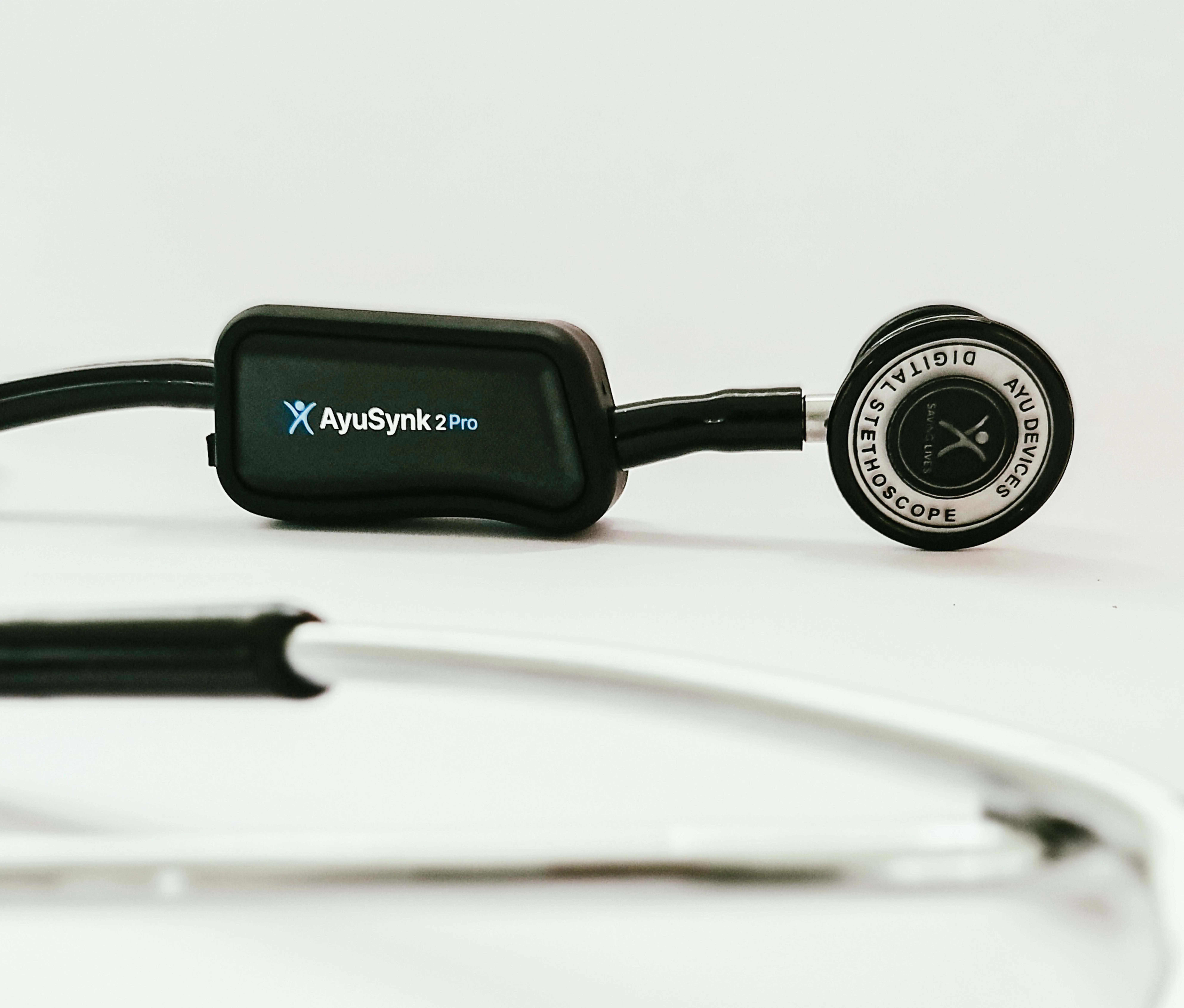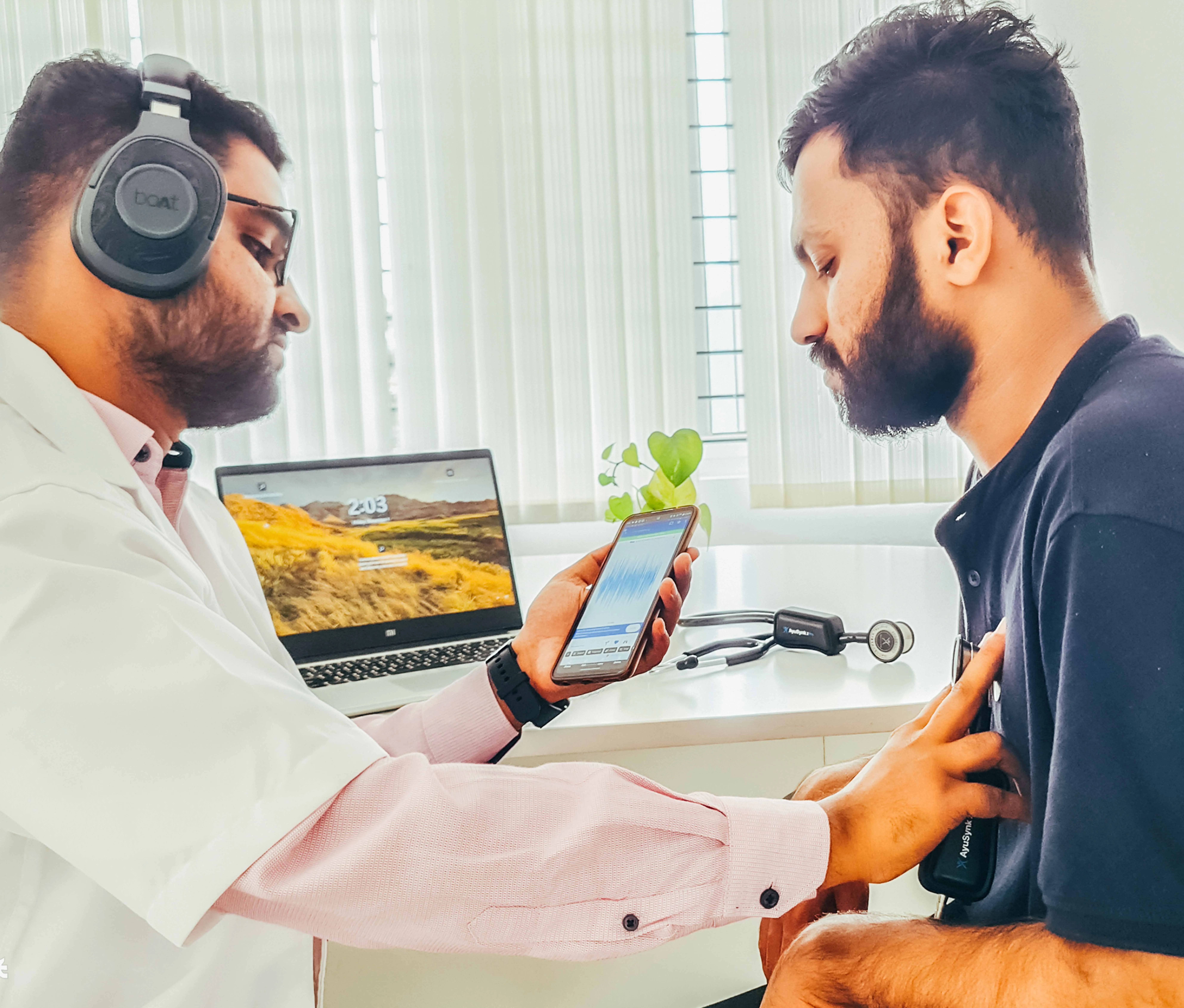How 60X Sound Amplification Transforms Clinical Auscultation Accuracy

Introduction
In the hands of a physician, a stethoscope can be a simple yet effective diagnostic tool. It has been the first line of detection for years, assisting medical professionals in hearing the heartbeat, identifying abnormal rhythms, or catching the crackling of problematic lungs.
However, the truth is that typical stethoscopes are not very effective in the settings where they are most needed. Diagnostic accuracy may be jeopardized by hospital environment noise, Detecting low-frequency heart and lung sounds, even in challenging cases like obese patients, and the aging process. The stethoscope with amplification comes in handy in this situation.
These devices are altering our listening habits and what we hear during patient examinations by boosting sound up to 60 times.
The Need for Enhanced Auscultation
Consider attempting to listen for a whisper in a crowded space. Auscultation in a hospital environment can feel exactly like that. It’s almost a guess when extra body layers make the heartbeat harder to pick up.
Research shows that approximately up to 30% of doctors over 60 years of age experience some degree of hearing loss, making it even harder to detect faint heart murmurs or subtle lung sounds. This can lead to missed diagnoses in certain cases where auscultation is critical.
Every detail counts when it comes to respiratory and cardiovascular care. Because of this, auditory clarity is not a luxury – it’s a therapeutic necessity.
What Is a Stethoscope with Sound Amplification?
The basic function of a stethoscope with sound amplification is to enhance internal body noises. However, it’s not just about loud audio. These devices cut down background noise and make heart and lung sounds louder and clearer.
Amplified stethoscopes transform vibrations into electrical signals, clean them up, and produce a clearer output than standard ones, which rely on the physical transmission of sound.
The difference is not only audible but also clinical when amplified by 60X.
There are mostly two kinds:
- Sound is enhanced using analog amplifiers without the use of digital processing.
- Digital models provide more individualized and clear listening experiences.

Bluetooth Stethoscope for Hearing Aids – Accessibility Reimagined
Some clinicians rely on hearing aids. Others prefer wireless earbuds or assisted hearing tools. That’s why the Bluetooth stethoscope for hearing aids is a game changer.
By streaming auscultation audio directly to personal hearing devices, these stethoscopes bring inclusivity to clinical practice. They make it possible for experienced professionals regardless of hearing ability to continue providing quality care.
It’s not just about convenience. It’s about preserving clinical talent, supporting diversity, and ensuring no underlying condition goes unheard.
Hear Every Sound with Absolute Clarity
Comparing Standard vs. Amplified Auscultation – What Changes Clinically?
Traditional stethoscopes have served us well. But they’re limited by what the human ear can pick up. With amplified models:
- Confidence in diagnosis increases
- Decisions are made faster
- Chances of missing a critical sound drop dramatically
It’s not about replacing old tools, it’s about enhancing them with smart support.

Future of Smart Auscultation Devices
The future is already arriving. AI integration is enabling pattern recognition in heart sounds, helping doctors detect anomalies even before symptoms emerge.
Telemedicine platforms are now pairing with Bluetooth stethoscopes to allow live sharing of audio between rural clinics and urban specialists.
In regions with limited healthcare access, this isn’t just innovation – it’s impact.
Conclusion
Stethoscopes have always symbolized the doctor-patient connection. But with the leap to 60X sound amplification, they’re becoming powerful allies in early, accurate, and inclusive diagnostics.
For clinicians, especially those using Bluetooth stethoscopes for hearing aids or working in challenging environments, making the shift to an amplified model could transform their daily practice.
It’s time to hear more, miss less, and deliver care with greater certainty.










